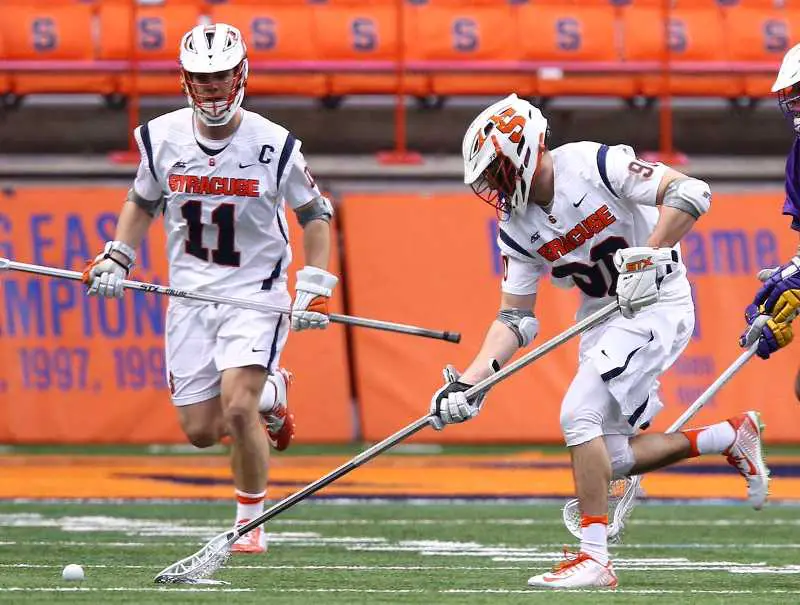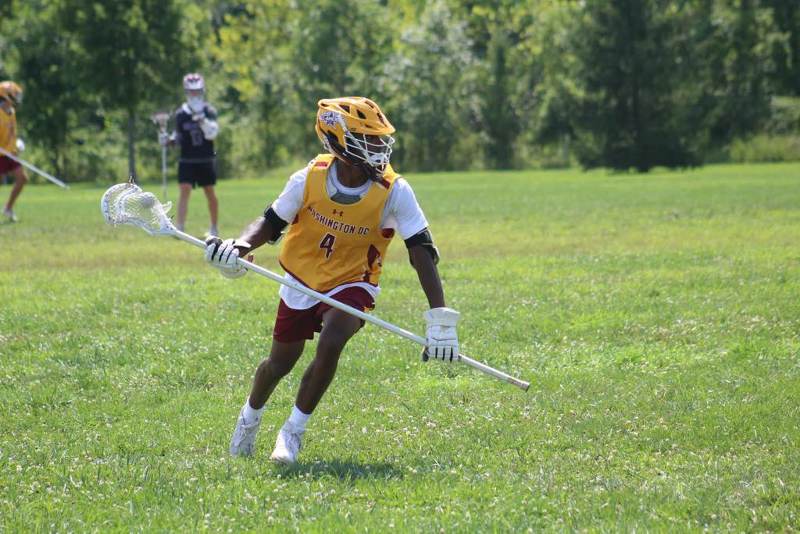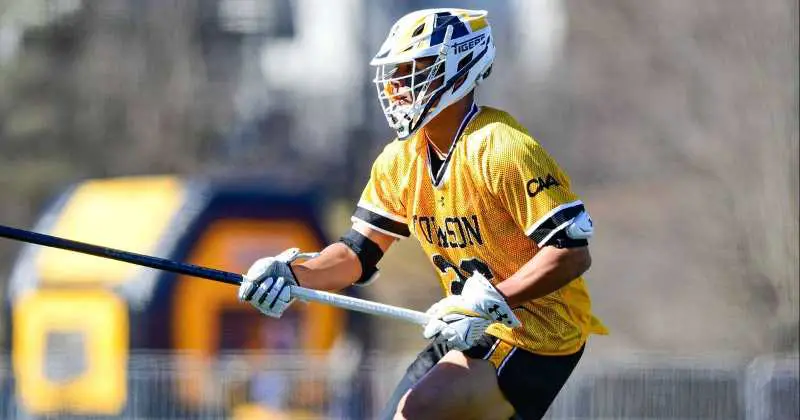As an attacker through and through, I still remembered the confusion I had when hearing the term LSM the first time. This is yet another common term you hear lacrosse coaches and players use, so let’s find out what is LSM in lacrosse.
LSM stands for long stick midfielder (or middie). There will be one LSM on every team. They plan a vital role in circumstances like the transition from offense to defense and faceoffs. When the transition happens, teams will quickly substitute in the LSM with a short stick middie. During faceoffs, LSM is responsible for groundballs.
Arguably, LSM is the most exciting and challenging position in lacrosse. In this post, we will unpack everything you need to know about this position such as the main tasks, responsibilities and how you could get better at LSM.
Introduction to LSM
In this post, I explore further the topic of how many long stick players there are. Since there can only be 4 long sticks at a time, the fourth long stick player along with the other three defensive long poles creates a defensive advantage over the opponents.
However, in order to differentiate the long stick midfielder from the defenders, players and coaches adopt the abbreviation “LSM” for easier communication and strategy planning.

In defense, communication is king. It’s the most effective tool to keep everyone on the same page and recover from lost positions. In addition, communication needs to be done fast. Since a split second is enough to make a difference in lacrosse, defenders will waste precious time yelling “long stick midfielder”.
The use of abbreviation perfectly solves this problem. For example, if a defender anticipates a rotation on the ball, he could quickly yell, “LSM, get ready!” Instead of “long stick midfielder, get ready!” By saving a half second it could very likely block a goal that otherwise would have gone into the net.
Moreover, having a unique and identifiable name makes it easy for coaches to do on field adjustments when LSM needs to substitute onto the field during transitions.
Read also: Why Do Some Lacrosse Players Use Long Sticks?
What does LSM do
As the only LSM on each team, there are a few unique responsibilities and tasks LSM has to do in order to carry out the defensive strategy.
First Line of Defense
The most important job of an LSM is to hold up against the opponent’s midfielders. Although there are 3 d poles waiting inside the defensive zone for turnover opportunities, the LSM needs to place pressure on the opponent midfielders early on, especially in transition. The earlier you poke holes in their offense, the better chances you have at winning the ball back.
Short stick midfielders simply don’t have the stick advantage as an LSM, so as a result, midfield defense chiefly falls on the shoulders of an LSM. The extra length allows LSMs to check forcefully from a distance. Psychologically, the lengthier stick has an intimidating effect on the opponents who will slow down the momentum or pass the ball to a teammate.
Support Short Stick Middies
Moreover, the LSM needs to take on the defensive responsibility to avoid short stick midfielders being the easy targets. Since short stick middies are easier to get past, opponents will “sink” the LSM and feed the ball to match up against the short stick middie. In this case, the LSM has to anticipate where the ball is going and run as fast as possible to switch on to the ball carrier.
If the LSM isn’t able to switch on to the ball, being a good slider can be more effective than an on-ball defender.
Lastly, the LSM has to constantly communicate with the other two short stick middies to provide the best possible first line of defense. To accomplish this, the LSM is reading the game and reacting to the opponent’s scheme at all times.

Mastermind of Defense
As we alluded to above, LSM is the player the team relies on for defense. They act as the mastermind behind every seamless coordination. They must be alert to every movement the opposing team is making meanwhile they need to monitor the conditions of their teammates. Why?
Because another major task as an LSM is to call off one short stick middie for substitution. During transitions, things can happen fast. Sometimes the team might not even have enough time to substitute before the ball carrier is already in the defensive zone. Other times the team needs to substitute the weakest link on the defense. Done poorly, substitutions create a lot of potential risks.
So all these are to say, LSMs are responsible for accurately identifying substitution opportunities and inserting themselves quickly into the right position.
Ground Balls
Everything mentioned above could take some time to get a good grasp on. If you want to improve rather quickly, pay close attention to ground balls and be ready to fight for every loose ball opportunity.
LSMs have a better reach than short stick middies so, in the event of a loose ball, the LSM can reach the ball from afar and get out of the crowd quickly. Then by the time the short stick middies reached the ground ball, LSMs have already picked up the ball.
Thus if there’s a loose ball in the middle of the field, the team is betting on the LSM to get it before anyone else could.
The team also relies on the LSM as the ground ball picker during faceoffs. Lurking on the wing, the LSM is crucial to tilting the possession pendulum to the team when opportunities present themselves.
Read also: Best Lacrosse Defense Shafts in 2022
What makes a good LSM

As you can see above, there are many vital responsibilities that LSMs take on. A good LSM is imperative to the success of team strategy. Thus, in this section, let’s find out what qualities make a good LSM.
Great endurance
Being a great LSM is a tough job. You have to do a lot of running in the midfield to either switch on to the ball or take a slide. Most of the time the LSM will be sprinting, coming in and off the field. So first and foremost, a good LSM has top notch conditioning.
Keeping offense in the alley
A good LSM understands the subtleties of his job. One of which is the task is to stop the ball carrier from getting to the middle of the field not necessarily to stop their movement. Keep the stick out in front to force the opponent to stay in the alley and let him run down the sides of the field.
When the ball carrier tries to go into the middle of the field, LSM throws quick yet controlled checks to place pressure. It’s worth noting that a good LSM doesn’t heavily rely on throwing sloppy and wild stick checks to stop opponents. Rather, they utilize good footwork and lengthier stick to guide and restrict the opponent.
Great at handling different ground ball situations
An LSM that is able to win every ground ball is the greatest asset to the team. Whether it’s winning in scrums or 1 on 1 ground ball, a good LSM can always get himself out of the pack unscathed with the ball in his pocket.
Communication
A skilled LSM is keenly aware of the state of the game and is able to effectively communicate with the short stick middies and defenders. As part of the man down unit, the LSM is crucial to keep the formation intact. Prior to faceoffs, he learns the faceoff player’s preference and tendencies, so he can position himself in a good spot for ground balls. Always look for ways to improve by talking with coaches after the games and trainings.
As a reference, watch this clip of all-star LSM Michael Ehrhardt working up and down the field
Effective LSM Practice
Effective and great LSM practices focus on developing your speed and improving footwork. Coupled with that, you also need to work on your ground balls. Check out the training videos below for guidance.
To go above and beyond doing ladder drills in your spare time can be very beneficial to hone in your defensive footwork. I recommend this ladder drill set on Amazon as a good place to start.
In conclusion, as we wrap up the discussion of LSM, I hope you learned some great lessons and takeaways from this post. Arguably the LSM is the most important position on the field. As you prepare for this season, double down on ground balls, sprinting and footwork.
Read also: Lacrosse Defensive Drills For Footwork




